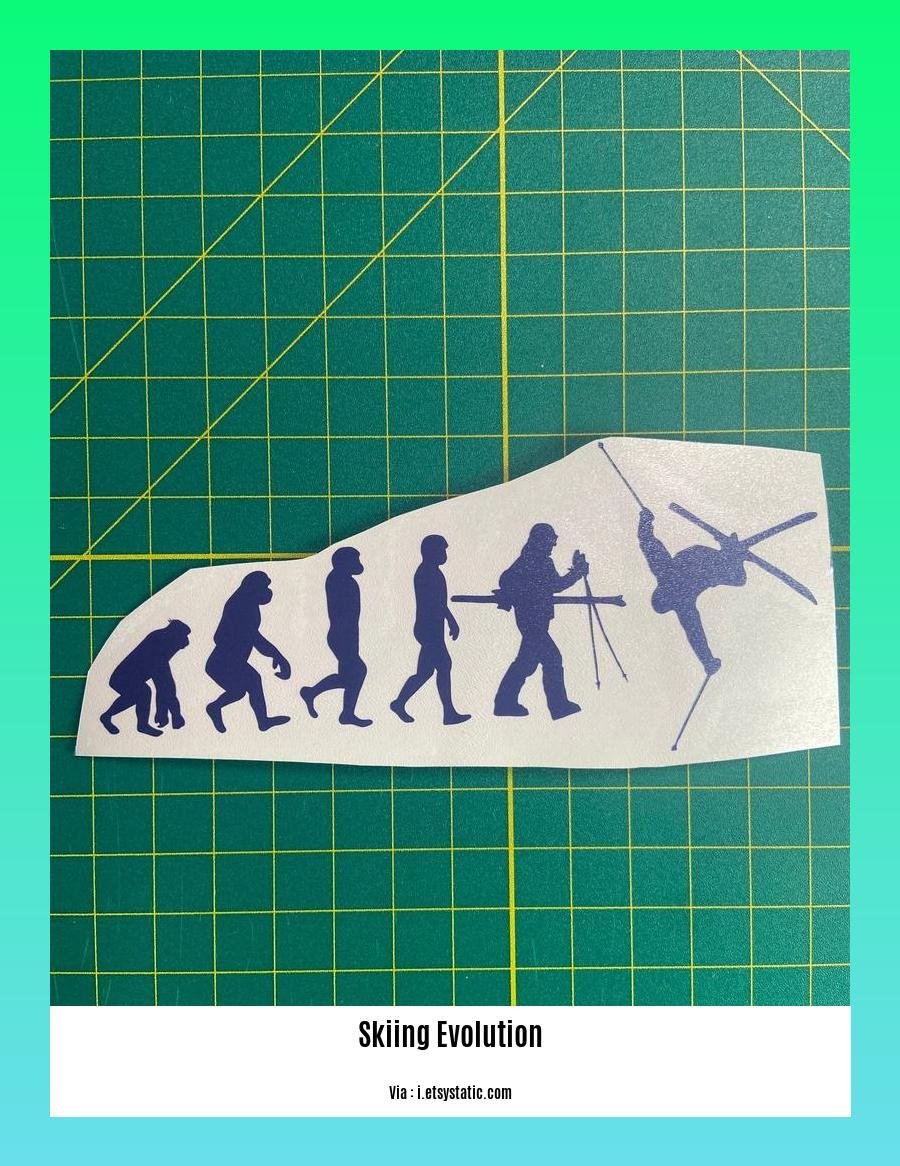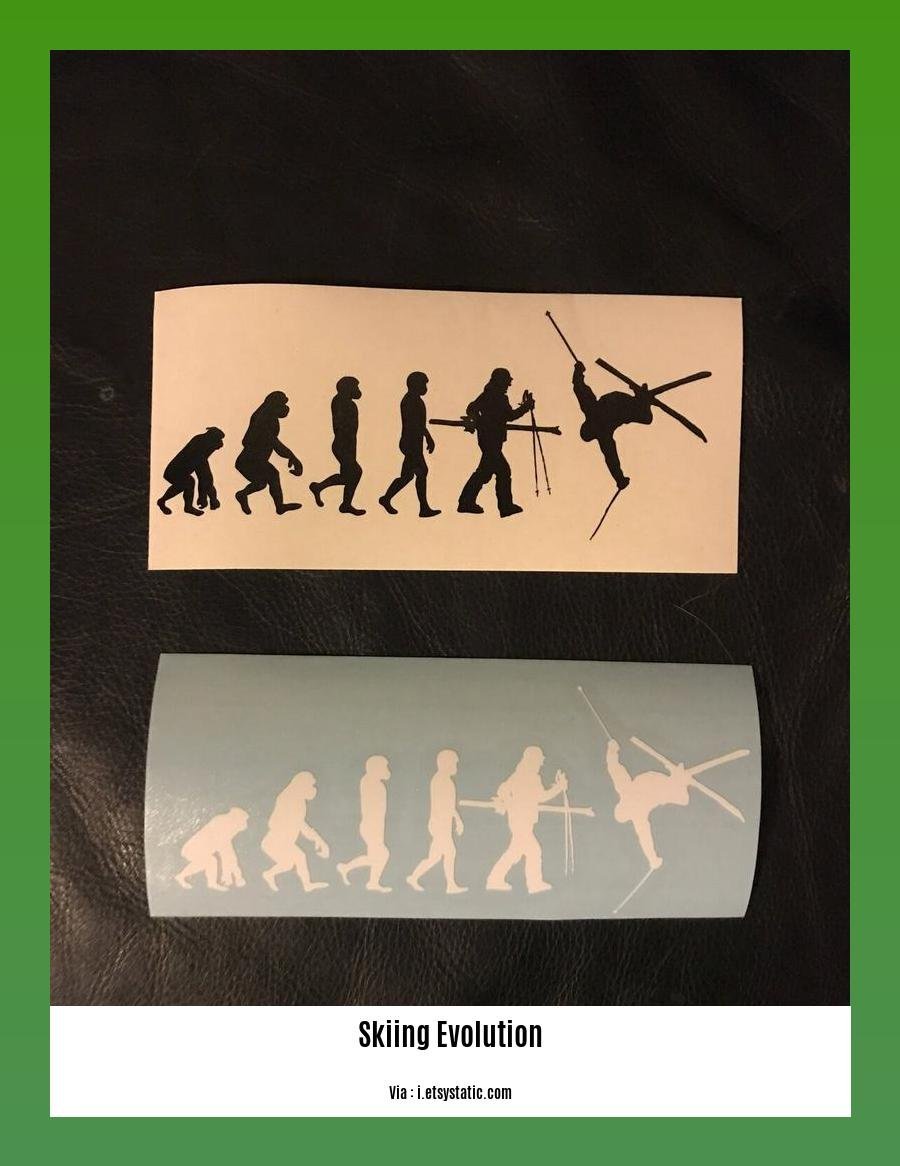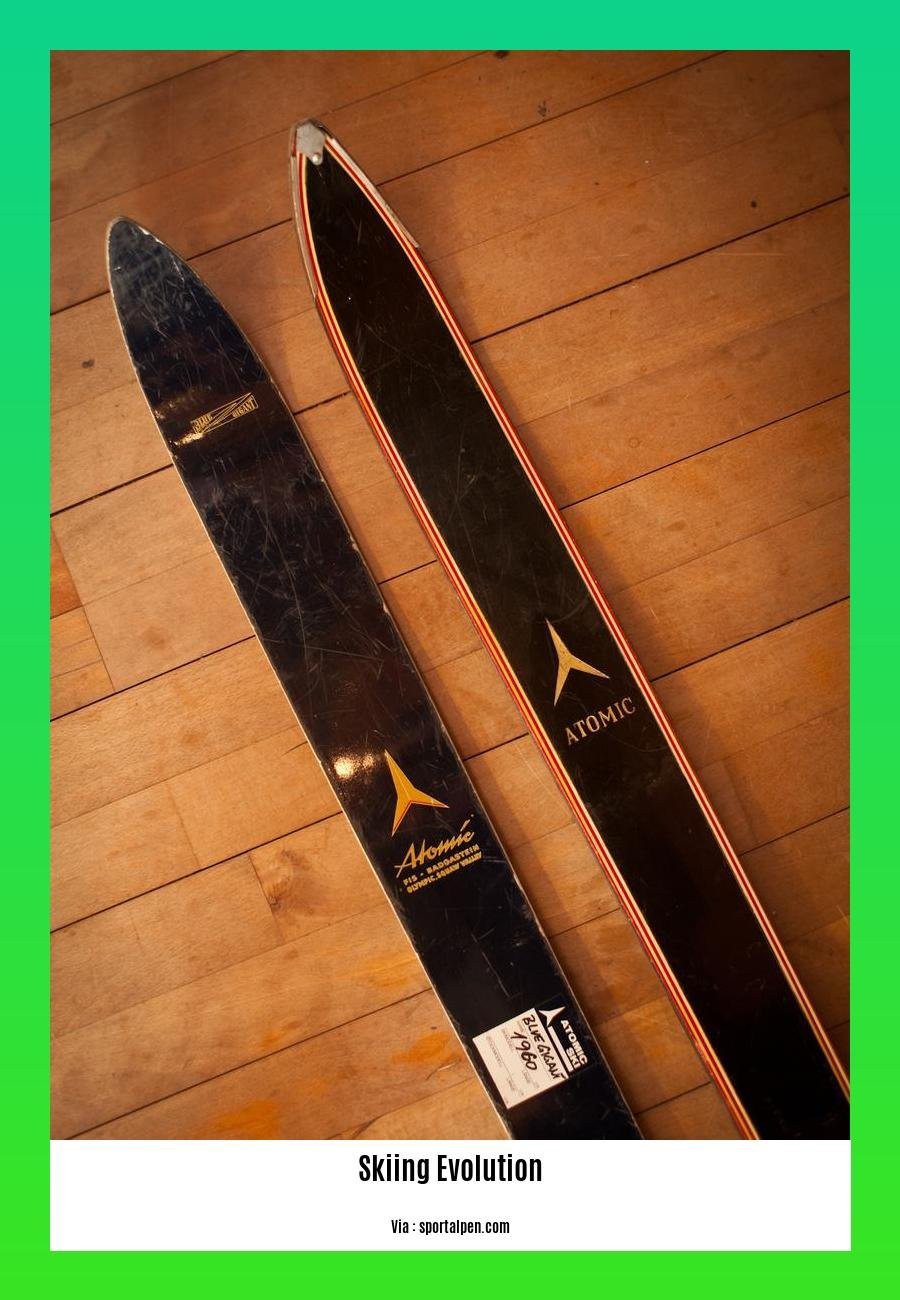Embark on a journey tracing the evolution of skiing, from its humble beginnings with wooden skis to the cutting-edge composites that define the sport today. Explore the technological advancements, innovative designs, and transformative materials that have shaped the skiing experience over the decades, unlocking new possibilities and redefining the boundaries of this exhilarating winter pastime. Join us as we delve into the fascinating narrative of Skiing Evolution: A Journey from Wood to Advanced Composites.
Key Takeaways:
- Early skis were simple and made of natural materials.
- Skiing transformed from a practical activity to a popular sport.
- Scandinavia played a key role in the development of skiing.
- Ski lifts revolutionized the accessibility of skiing.
- Skiing developed its own unique culture and lifestyle.
- Alpine skiing continues to evolve with advancements in equipment and competitions.
The Skiing Evolution

Over the years, the sport of skiing has undergone a remarkable transformation, taking us from wooden planks to technologically advanced equipment. Come with us as we delve into the captivating skiing evolution**.
From Humble Beginnings:
- Early skis were long, narrow, and constructed from wood or bone, primarily used for transportation.
- Scandinavia emerged as a skiing hub, hosting organized competitions as early as the 18th century.
A Sport Takes Shape:
- The invention of ski lifts in 1908 revolutionized skiing, making it more accessible and enjoyable for recreational purposes.
- A distinct skiing culture emerged, complete with magazines, films, fashion, and unique ski town identities.
Modern Advancements:
- Alpine skiing has continued to evolve, with lightweight skis, high-tech bindings, and specialized equipment for various disciplines.
- Freestyle skiing has gained immense popularity, showcasing aerial maneuvers and tricks in competitions like the X Games.
Technological Innovations:
- Composite materials like carbon fiber and Kevlar have replaced traditional wood, resulting in skis that are lighter, stronger, and more responsive.
- Advanced designs, such as rocker and camber profiles, have enhanced maneuverability and performance.
The Future of Skiing:
- Sustainability is becoming increasingly important, with a focus on eco-friendly materials and practices.
- Technological advancements in equipment and training methods continue to push the boundaries of skiing.
So, how does this skiing evolution impact your experience? Modern equipment makes skiing more accessible, enjoyable, and allows you to explore different terrains with confidence. As technology continues to evolve, the sport of skiing will undoubtedly continue to captivate and inspire generations to come.
🌟 Learn about the fascinating history of skiing and how this thrilling sport came to be. Dive into the evolution of skiing techniques and equipment, from ancient origins to modern advancements.
history of skiing
🌟 Uncover the detailed milestones in the history of skiing from its humble beginnings to its popularity as a global sport. Explore the timeline of key events and innovations that have shaped the past and present of skiing. ski history timeline
🌟 Discover the captivating origins of skiing and its deep cultural roots. Trace the journey of how this ancient mode of transportation transformed into a beloved recreational activity. skiing origin
The Role of Ski Resorts in Innovation

Ski resorts have played an integral role in the evolution of skiing, from its humble beginnings to the high-tech sport we know today. Here’s how:
Pioneering the Sport
Resorts like Chamonix, France, and St. Moritz, Switzerland, were among the first to embrace skiing. They introduced ski lifts, lodges, and organized competitions, making the sport accessible to a wider audience.
Driving Equipment Development
The Role of Ski Resorts in Innovation: Ski resorts provided a testing ground for new equipment. Ski makers worked closely with resorts to refine skis, boots, and bindings, leading to advancements like camber, and the adoption of modern materials like composite fibers.
Specialization and Variety
Resorts specialize in different types of skiing, from beginner slopes to extreme terrain. This specialization has driven innovation in equipment, such as wider skis for powder and narrower skis for racing.
Snowmaking: A Game-Changer
Snowmaking has revolutionized the ski industry. It ensures reliable snow conditions, allowing resorts to open earlier and stay open longer. This has made skiing more accessible and expanded the ski season.
Key Takeaways:
- Ski resorts played a pivotal role in popularizing and developing skiing.
- They fostered innovation in equipment, lifts, and resort infrastructure.
- Resorts specialize in different types of skiing, driving equipment advancements.
- Snowmaking has made skiing more accessible and extended the ski season.
Citation: TheFascinating History of Alpine Skiing: Invention and Evolution
Environmental Impact on Skiing
The pristine mountain landscapes that skiers cherish are under increasing threat from climate change and human activities. Deforestation for ski trails, habitat fragmentation, energy consumption for snowmaking, and transportation emissions all contribute to the Environmental Impact on Skiing.
Ski Resorts Take Action
Recognizing their role, ski resorts worldwide are implementing sustainability initiatives to minimize their footprint.
- Trail Planning: Careful planning reduces deforestation by minimizing trail width and using existing clearings.
- Wildlife Habitat Conservation: Establishing protected areas and restoring degraded habitats helps wildlife thrive.
- Water Conservation: Efficient snowmaking technologies reduce water consumption, and resorts are exploring alternative sources like rainwater harvesting.
- Energy Efficiency: Renewable energy sources, such as solar and wind, power resorts, and energy-efficient practices are implemented.
- Sustainable Transportation: Promoting carpooling, public transportation, and electric vehicles reduces greenhouse gas emissions.
You Can Make a Difference
As skiers, we can also contribute to sustainability by:
- Choosing resorts with strong environmental policies.
- Using public transportation or carpooling to the slopes.
- Conserving water and energy during our stay.
- Supporting resorts that promote sustainable practices.
Key Takeaways:
- Skiing has significant Environmental Impact on Skiing, including deforestation, habitat fragmentation, and energy consumption.
- Ski resorts are implementing sustainability initiatives, such as reducing deforestation, conserving wildlife habitats, and using renewable energy.
- Skiers can contribute by choosing sustainable resorts, reducing their carbon footprint, and supporting eco-friendly practices.
Most Relevant URL Source:
- Can Skiing Be Eco-Friendly? Here’s How Ski Resorts Are Upping Their Sustainability Game
Future of Skiing Technology
The ski industry is constantly evolving, with new technologies emerging all the time. From smart goggles to virtual reality ski slopes, the future of skiing looks brighter than ever.
Smart Ski Equipment
Smart ski equipment is one of the most exciting developments in the ski industry. Goggles with built-in GPS and sensors can track your speed, altitude, and distance. They can also provide you with real-time information about the weather and snow conditions. Other smart ski equipment includes helmets with built-in audio systems and ski boots that can be heated or cooled to keep your feet comfortable.
Virtual Reality Ski Slopes
Virtual reality (VR) is another emerging technology that is having a big impact on the ski industry. VR ski slopes allow you to experience the thrill of skiing without ever having to leave your home. You can choose from a variety of different slopes, and you can even race against other skiers online. VR ski slopes are a great way to improve your skiing skills or just have some fun.
Revolutionary Materials
Graphene is a revolutionary material that is making skis lighter, stronger, and more durable. Graphene is a form of carbon that is only one atom thick. It is stronger than steel but lighter than aluminum. Skis made with graphene are stiffer and more responsive, which makes them easier to control and maneuver.
Ski Lift Technology
Ski lift technology is also evolving with new designs and innovations. New ski lifts are being built that are faster, more efficient, and more comfortable. Some ski lifts even have heated seats and Wi-Fi.
Artificial Intelligence
Artificial intelligence (AI) is being used to analyze data and improve skiing technique. AI-powered ski simulators can help you identify and correct your mistakes. AI can also be used to create personalized training plans that are tailored to your individual needs.
Key Takeaways:
- Smart ski equipment is making the skiing experience more enjoyable and informative.
- Virtual reality ski slopes are providing a new way to experience the thrill of skiing.
- Revolutionary materials like graphene are making skis lighter, stronger, and more durable.
- Ski lift technology is evolving with new designs and innovations.
- Artificial intelligence is being used to analyze data and improve skiing technique.
Relevant URL Source:
- The Future Of Skiing: How Artificial Intelligence Is Changing The Game















